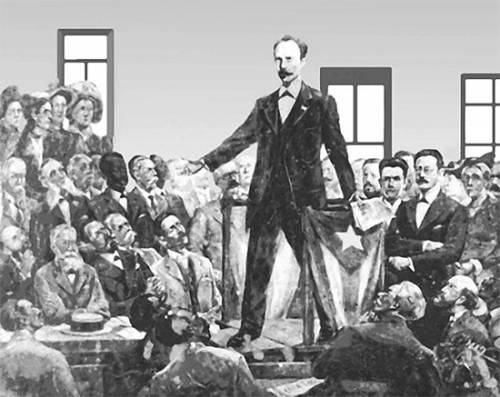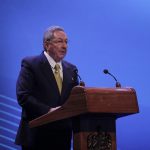The Zanjón Pact did not solve the two great problems of colonial Cuba: the abolition of slavery and independence. Therefore, the only way to achieve this was to restart the armed struggle for the definitive independence from Spain. The organizing task for such an important contest was in the hands of José Martí.
The Apostle was able to find the codes necessary to free the insurrectionary cause from the skepticism that weighed down not a few of the veterans, imbue the youth with a patriotic spirit, put an end to the quarrels that divided the revolutionaries and integrate the dispersed elements.
Martí went to all those who were interested in the independence of Cuba, especially the Cuban émigrés, tobacco growers in Tampa and Key West. It was in them that he found the deepest patriotic sentiment and the most vigorous support.
He organizes revolutionary clubs, published articles and pro-independence brochures from Spain, Mexico and Guatemala, traveled to Caracas and founded the Venezuelan Magazine, was a correspondent for important publications: La Opinion Nacional, El Partido Liberal, La República y La Nación, from Caracas, Mexico , Honduras and Buenos Aires, respectively, participated as a representative of Uruguay in the American International Monetary Conference, where it warns about the danger that the United States represents for America.
During his stay in Tampa, Martí gave the speeches Con todos y para el bien de todos and Los Pinos Nuevos, two of his most important oratory.
He conceived the need to create a single revolutionary party, the Cuban Revolutionary Party, as an instrument to achieve a centralized organization and provide the necessary resources to achieve emancipatory purposes.
The apostle lacked guaranteeing the incorporation into the war of the main leaders of the past Ten Years feat. To achieve this, in September 1892 he traveled to the Dominican Republic where he met with Máximo Gómez, the old wrestler. With the success of the interview between Martí and Gómez, an essential moment within the unit is revealed.
In late June and early July 1893, José Martí’s unification work took another solid step forward as he traveled to Costa Rica to meet the courageous patriot Antonio Maceo. And with open arms Maceo received him and with his willingness to ratify his greatness again and definitively, the protagonist of the Baraguá Protest joined the Marti project.
The Order of Uprising was agreed on January 29 of the year 1895 authorizing this for the second fortnight of February. Then, in Cuba, they agreed on the date of the 24th, which was communicated to Martí by Juan Gualberto Gómez in a simple message: “money orders accepted.”
When, after the failed Plan de las Fernandinas, Martí, Gómez, the Maceo, Serafín Sánchez, Roloff, Crombet arrived on the Island, who were already fighting on the Island: Sanguily, Carrillo, Salvador Cisneros, Masó. , Moncada and many others, there was no longer any doubt that the Homeland would be free.
It is a lesson for our times, for now. And it tells us why in our country, where we continued the Revolution of ’68 and ’95, we do not fear special periods, or blockades and we resist: it is that strength, patriotism, loyalty, trust in top bosses.

Redacción Digital
Equipo de redactores del sitio web de Radio Mayabeque



